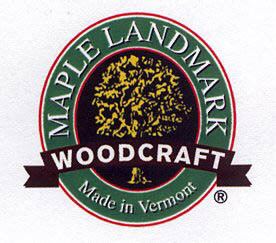Industry Manufacturing, retail Products Wooden toys Founded 1979 Type Privately held company | Key people Mike Rainville Headquarters Middlebury Number of employees 40 | |
 | ||
Website Maple Landmark Woodcraft Profiles | ||
Vermont woodworking festival maple landmark woodcraft
History
Mike Rainville first came to woodworking as a hobby in the 1970s when he was 11, when his mother told him "he needed to find something to do." With both sets of grandparents carpenters/builders/farmers/jack of all trades, there was plenty of materials around to do something with. Working in his parent's basement in Lincoln, Vermont, with wood from his grandfather's carpentry projects, a coping saw, and a sanding block, Mike was able to make his first items - spool and bobbin holders. Later on he began making cribbage boards, which are still in the line today. Local craft fairs provided Mike with income to purchase new equipment and materials. By 1979, his first wholesale relationship started.
Contents
After graduating from Clarkson University in 1984, Mike went to work constructing a new woodshop of ample size for his now full-time business, now known as Maple Landmark Woodcraft. The choice "Maple Landmark" as the name for the business was a natural extension of the name Mike's family used for their maple sugaring business and dairy farm, Maple Landmark Homestead.
In 1987, Mike acquired the Troll's Toy Workshop, formerly of Barnet, Vermont. This addition brought in many alphabet-themed products, including letter cars, blocks, and signage letters. The company quickly grew to warrant more full-time employees.
The product line evolved over the coming years, adding items such as trivets, ornaments, and the first NameTrains. Originally, finished with a clear coat the NameTrains took off and as more retailers expressed interest in have the letters colored, Mike worked to develop a non-toxic color dye stain and the first colored NameTrains appeared on the market in 1994.
Production of these new products had outgrown existing facilities by late 1994. With no room to expand in Lincoln, it was decided to build a new shop Middlebury, Vermont that would have easier access to raw materials (not on a dirt road in Lincoln anymore)and a retail space so visitors could shop the year round for products. Maple Landmark moved into the new shop on Exchange Street, in 1996.
With the desire to stay current both from the product demand side and the production side, investments were made in lasers and additional CNC routers. These machines allowed for more production in less labor-intensive manners. The lasers also gave Maple Landmark the ability to add graphic designs to products, creating the ability to do custom work alongside regular production work.
More products and more machines required the enlargement of the factory to 15,000 square feet (1,400 m2) in 1999.
In 2001, Montgomery Schoolhouse, another long established Vermont-based producer of wooden toys, was purchased by Maple Landmark and all the operations were consolidated in Middlebury. Mike didn't want to see the long storied name of Montgomery Schoolhouse to go by the wayside. So going forward, products were redesigned for better, more efficient production but the name remained with the product lines.
As toys, games and gifts are bought with discretionary income, the economic downturn in the mid 2000s impacted business at Maple Landmark. Slow or no growth were the norm until summer 2007 when products from other countries and manufacturers were being recalled for child health and safety reasons. These recalls boosted Maple Landmark's business in 2008. Consumers were looking for products and companies they could trust. At the same time, Maple Landmark Woodcraft developed the Schoolhouse Naturals line of products. All wood - no finishes with engraved details. This product line was a hands down favorite for consumers that were particularly concerned about chemicals.
In vying to stay flexible and innovative, Maple Landmark purchased several printers that allow for full color printing on wood. In house designs could be more colorful and intricate and special custom work not only could be full color but it could also look like it was replicated in any variety of styles.
Currently Maple Landmark employs about 40 people and sells products to over 2000 gift shops and toy stores throughout the country and abroad.
